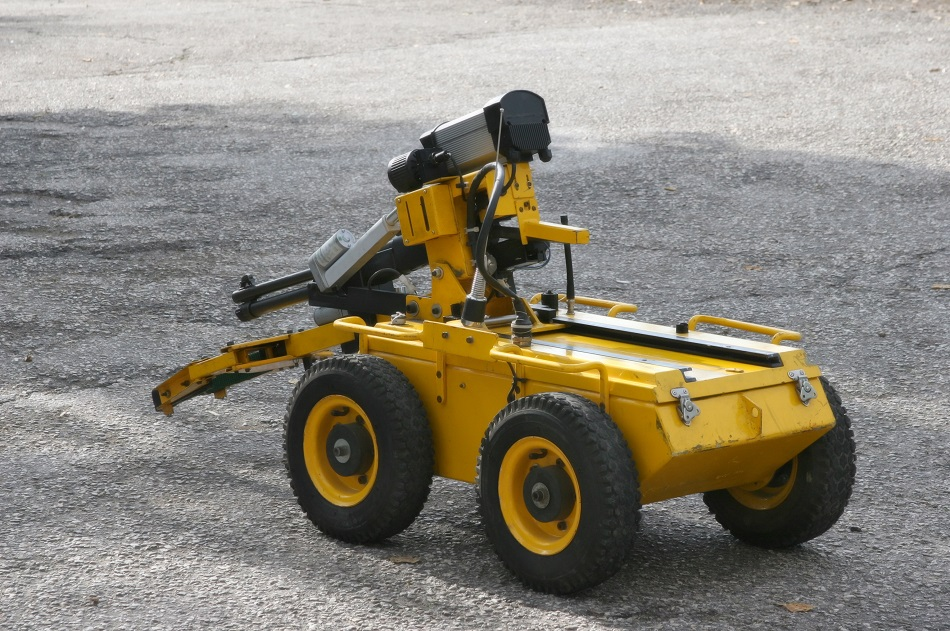
Image Credit: Stavchansky Yakov/Shutterstock.com
Mining brings about risk and danger with falling rocks, entrapment, and fire endangering the safety of workers on a regular basis. The industry is changing to become safer and more efficient thanks to the introduction of automated robots.
Robots now assist in drilling and excavation, in the detection of dangerous gases much like the canaries used in coal mines in the early 20th Century, and in the hauling of rock in and out of mines. These autonomous machines protect humans and are essential in areas that are unsafe for people, such as abandoned mines.
Why Do We Mine?
Mining provides a bounty of precious minerals utilized in everyday life, in buildings, cars, and electronic devices. Many abandoned mines are being revisited for their rare natural elements. Once considered superfluous, they are now integral to smartphones, hard drives, LEDs, and defense and energy systems.
Robots Exploring Abandoned Mines
In Europe, there are 8,500 flooded and abandoned mines, many of which are being re-evaluated for their mineral potential as part of the Horizon 2020-funded Explorer for Flooded Mines (UNEXMiN) project.
UX-1 is just one part of a multi-robot platform designed to explore and map abandoned mines, and gather valuable geological, mineralogical, and spatial information that cannot be obtained any other way. It can reduce exploration costs and help Europe to develop a sustainable supply of precious minerals.
It is challenging to design a robot that can undertake such difficult tasks in confined spaces with limited visibility. They must house a wealth of instruments, including acoustic cameras, SONAR, thrusters, laser scanners, a computer, rechargeable batteries, buoyancy control systems, and a protective pressure hull which makes up various subsystems to supply power and propulsion.
Testing Robots in the Idrija Mercury Mine, Slovenia
In December 2018, the 60 cm spherical UX-1 was put to the test by exploring a narrow, flooded passage in the Idrija mercury mine in Slovenia. The robot was able to autonomously navigate the dark and murky waters of the mine and could recognize different minerals using its multispectral cameras.
Combining Robot and Sensors Technology with Interconnected Network Systems
ARIDuA, autonomous robots and the Internet of Things (IoT) in underground mining, is another project aiming to combine robotics with the interconnected network of devices, appliances, and systems that communicate and exchange data.
Examples include networked sensors that monitor the mine environment and provide early warnings about gas leaks. The mine can be safely evacuated and robots, capable of being controlled by the same network of sensors, are deployed to investigate and explore possible solutions.
Abandoned mines are often rich in potash which is a mined salt containing potassium in a water-soluble form. The robots are waterproof and equipped with cameras that can tilt and pan, and other sensors can provide feedback to the surface.
If the robot has to travel long distances deep underground, fiber optics might be used to avoid signal degradation. Inspection robots will be fitted with HD video systems to record and provide real-time feedback.
Robots for Monitoring Mining Hazards
Many robots also work on the surface to automate mining operations but are supervised from afar. Some move through the mine taking temperature readings, monitoring rock stability, and other conditions that might affect worker safety.
Others, such as drones or unmanned aerial vehicles, monitor the site for potential rockslides, confirm clearance before blasts, generate maps of site traffic and hazards, and help in the positioning of equipment.
Julius is a robot assistant designed by Dr. Bernhard Jung, professor of computer science at Freiberg University of Mining and Technology in Germany. Capable of providing physical strength by carrying heavy equipment, the robot can also aid accurate scanning by holding devices much steadier than the human hand thereby improving readings.
Robotic drill rigs make holes in the rock, which is filled with explosives to break up the rock for excavation. They use GPS, obstacle detection, and advanced auto-drilling to move and dig independently. They can make the process more accurate than human-operated equipment, and are safer and more efficient.
Driverless vehicles are becoming increasingly prevalent in mining sites, particularly in Western Australia as they undergo testing. Self-driving ore vehicles use the same technology as other autonomous vehicles. Laser scanners and radar allow them to move about safely and quickly in narrow dusty tunnels.
Driverless trains are also employed for haulage in and out of the site and feature complex onboard computer systems to allow them to drive, stop, and track signals for example. They have been credited with improving safety thanks to their detection systems which act predictably at crossings and follow speed restrictions.
What is the Future of Mining Robots?
As the desire for precious minerals increases, one-day mines may be fully automated, not just on land but in the oceans and even in space.
Massive leaps have been made in automating mining and in the robots that help to keep humans safe, but there is still the potential to improve.
For now, humans and robots must continue to work together as each provides a different skill set. While robots can make a mine safer, more efficient, and provide physical strength, humans are still needed to make key decisions.
Sources and Further Reading
Disclaimer: The views expressed here are those of the author expressed in their private capacity and do not necessarily represent the views of AZoM.com Limited T/A AZoNetwork the owner and operator of this website. This disclaimer forms part of the Terms and conditions of use of this website.